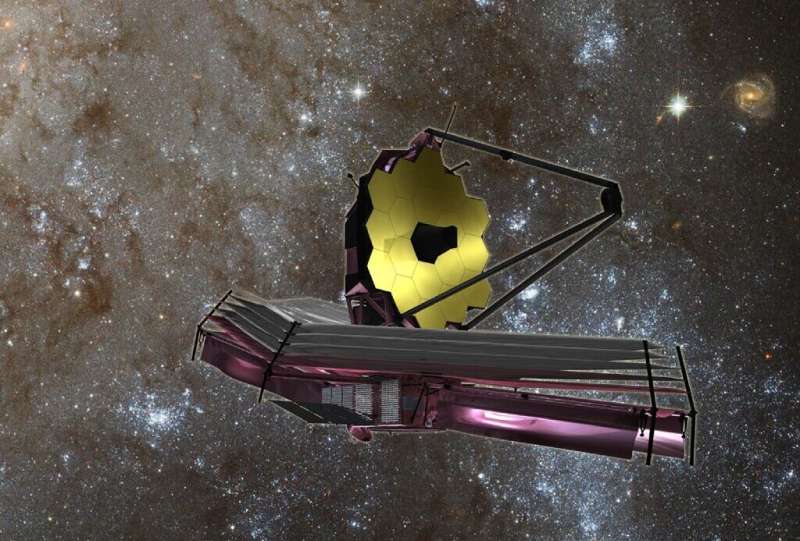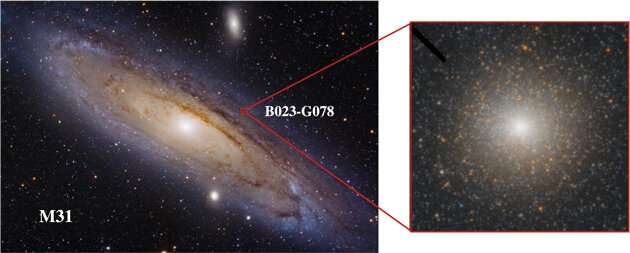
Copernical Team
SpaceX ISS freighter splashes down off Florida
 A SpaceX Dragon capsule that had transported supplies and experiments to the International Space Station splashed down along the coast of Florida on Monday afternoon.
The capsule's four main parachutes were deployed shortly after 4 p.m. EST, and splashdown was confirmed two minutes later, the company said.
The freighter delivered some 4,900 pounds of science experiments and stati
A SpaceX Dragon capsule that had transported supplies and experiments to the International Space Station splashed down along the coast of Florida on Monday afternoon.
The capsule's four main parachutes were deployed shortly after 4 p.m. EST, and splashdown was confirmed two minutes later, the company said.
The freighter delivered some 4,900 pounds of science experiments and stati OneWeb and Hughes to bring orbital broadband service to India
 OneWeb, the low Earth orbit satellite communications company, and Hughes Network Systems LLC has announced a strategic six-year Distribution Partner agreement to provide low Earth orbit (LEO) connectivity services across India. The arrangement between OneWeb and Hughes Communications India Private Ltd. (HCIPL), a joint venture between Hughes and Bharti Airtel Limited, follows the Memorandum of U
OneWeb, the low Earth orbit satellite communications company, and Hughes Network Systems LLC has announced a strategic six-year Distribution Partner agreement to provide low Earth orbit (LEO) connectivity services across India. The arrangement between OneWeb and Hughes Communications India Private Ltd. (HCIPL), a joint venture between Hughes and Bharti Airtel Limited, follows the Memorandum of U Webb telescope reaches final destination, a million miles from Earth
 The James Webb Space Telescope has arrived at its cosmic parking spot a million miles away, bringing it a step closer to its mission to unravel the mysteries of the Universe, NASA said Monday.
At around 2:00 pm Eastern Time (1900 GMT), the observatory fired its thrusters for five minutes to reach the so-called second Lagrange point, or L2, where it will have access to nearly half the sky at
The James Webb Space Telescope has arrived at its cosmic parking spot a million miles away, bringing it a step closer to its mission to unravel the mysteries of the Universe, NASA said Monday.
At around 2:00 pm Eastern Time (1900 GMT), the observatory fired its thrusters for five minutes to reach the so-called second Lagrange point, or L2, where it will have access to nearly half the sky at Orbital Insertion Burn a Success, Webb Arrives at L2
 At 2 pm EST Monday, Webb fired its onboard thrusters for nearly five minutes (297 seconds) to complete the final postlaunch course correction to Webb's trajectory. This mid-course correction burn inserted Webb toward its final orbit around the second Sun-Earth Lagrange point, or L2, nearly 1 million miles away from the Earth.
The final mid-course burn added only about 3.6 miles per hour (1
At 2 pm EST Monday, Webb fired its onboard thrusters for nearly five minutes (297 seconds) to complete the final postlaunch course correction to Webb's trajectory. This mid-course correction burn inserted Webb toward its final orbit around the second Sun-Earth Lagrange point, or L2, nearly 1 million miles away from the Earth.
The final mid-course burn added only about 3.6 miles per hour (1 Looking Up at the Asteroids in the Neighborhood
 Asteroids fly through our solar system all the time, but it's rare for us to take notice of them. But that's changed this week, as an asteroid passes within 1,231,184 miles of Earth on January 18. The asteroid, dubbed 7482 (1994 PC1), was first seen in 1994 and is about two-thirds of a mile wide.
One likely reason Americans are paying more attention is because many millions have watched th
Asteroids fly through our solar system all the time, but it's rare for us to take notice of them. But that's changed this week, as an asteroid passes within 1,231,184 miles of Earth on January 18. The asteroid, dubbed 7482 (1994 PC1), was first seen in 1994 and is about two-thirds of a mile wide.
One likely reason Americans are paying more attention is because many millions have watched th How to Retain a Core
 Pasadena CA (JPL) Jan 25, 2022
Have you ever wondered how a coring bit grabs and holds onto a rock core?
As we drill, the bit teeth cut a 27mm diameter circle in the rock and leave the 13mm diameter center intact. As we dig deeper, that cylinder of rock is fed into the sample tube that was loaded inside the bit. When the drill reaches its target depth, typically 66mm, the core is fully in
Pasadena CA (JPL) Jan 25, 2022
Have you ever wondered how a coring bit grabs and holds onto a rock core?
As we drill, the bit teeth cut a 27mm diameter circle in the rock and leave the 13mm diameter center intact. As we dig deeper, that cylinder of rock is fed into the sample tube that was loaded inside the bit. When the drill reaches its target depth, typically 66mm, the core is fully in Chinese lunar rover's 2-year travelogue on moon's far side reported
 Chinese scientists published the country's lunar rover travelogue of its first two years of service that depicted the unique and untrodden moonscape on the moon's far side, revealing its notable differences with the near side with in situ evidence.
The study published on Thursday in the peer-reviewed journal, Science Robotics, described cloddy soil, gel-like rocks, and fresh small craters
Chinese scientists published the country's lunar rover travelogue of its first two years of service that depicted the unique and untrodden moonscape on the moon's far side, revealing its notable differences with the near side with in situ evidence.
The study published on Thursday in the peer-reviewed journal, Science Robotics, described cloddy soil, gel-like rocks, and fresh small craters Hope for present-day Martian groundwater dries up
 Liquid water previously detected under Mars' ice-covered south pole is probably just a dusty mirage, according to a new study of the red planet led by researchers at The University of Texas at Austin.
Scientists in 2018 had thought they were looking at liquid water when they saw bright radar reflections under the polar cap. However, the new study published Jan. 24 in the journal Geophysica
Liquid water previously detected under Mars' ice-covered south pole is probably just a dusty mirage, according to a new study of the red planet led by researchers at The University of Texas at Austin.
Scientists in 2018 had thought they were looking at liquid water when they saw bright radar reflections under the polar cap. However, the new study published Jan. 24 in the journal Geophysica Webb telescope reaches destination, 1 mn miles from Earth: NASA

The James Webb Space Telescope has fired its thrusters and reached its orbital destination around a million miles (1.5 million kilometers) away from our planet, NASA said Monday, a key milestone on its mission to study cosmic history.
At around 2:00 pm Eastern Time (1900 GMT), the observatory fired its thrusters for five minutes in order to reach the so-called second Lagrange point, or L2, where it will have access to nearly half the sky at any given moment.
"Webb, welcome home!" said NASA Administrator Bill Nelson in a statement.
"We're one step closer to uncovering the mysteries of the universe. And I can't wait to see Webb's first new views of the universe this summer!"
Extraordinary black hole found in neighboring galaxy

Astronomers have discovered a black hole unlike any other. At one hundred thousand solar masses, it is smaller than the black holes we have found at the centers of galaxies, but bigger than the black holes that are born when stars explode. This makes it one of the only confirmed intermediate-mass black holes, an object that has long been sought by astronomers.
"We have very good detections of the biggest, stellar-mass black holes up to 100 times the size of our sun, and supermassive black holes at the centers of galaxies that are millions of times the size of our sun, but there aren't any measurements of black between these.

